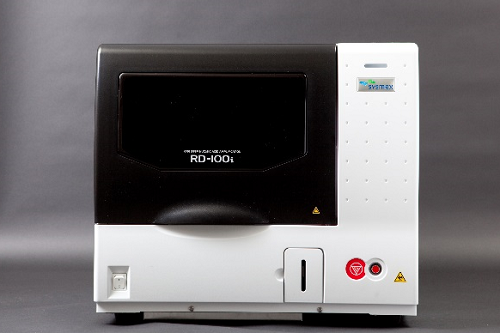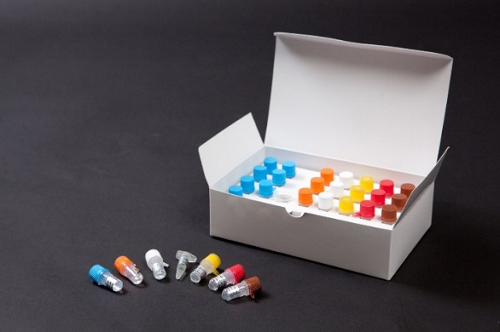News
News
Sysmex Receives Regulatory Approval in China of an in Vitro Diagnostic Reagent to Help Diagnose Breast Cancer Lymph Node Metastasis Using the OSNA™ Method
-Aiming to Introduce a System to Test for Breast Cancer Lymph Node Metastasis into the Chinese Market-
Sysmex Corporation (HQ: Kobe, Japan; Chairman and CEO: Hisashi Ietsugu) received regulatory approval on December 9, 2019 from China’s National Medical Products Administration (NMPA) for LYNOAMP™ BC, an in vitro diagnostic reagent. Our system to test for breast cancer lymph node metastasis using the OSNA™ method has received Class III1 regulatory approval as the first product for lymph node metastasis testing using a molecular biological technique.
The Japanese Breast Cancer Society’s Breast Cancer Clinical Practice Guideline has described a lymph node metastasis testing system for breast cancer using the OSNA™ method as an alternative to the H&E staining test2 for the pathological testing of sentinel lymph nodes, in addition the system is also recommended outside Japan by the Spanish Society of Senology and Mammary Pathology and the U.K. National Institute for Health and Clinical Excellence. The system has been introduced at more than 300 medical institutions in Japan and overseas, where it is playing an important role in helping doctors determine treatment methods.
GLOBOCAN 2018, issued by the International Agency for Research on Cancer (IARC) of the World Health Organization (WHO), projects that the number of breast cancer patients around the world will reach approximately 2.6 million by 2030. In China, where the number of breast cancer patients has been trending upward recently, the number of new patients numbered around 370,000 in 2018, making breast cancer the fifth-highest cause of death among women.
In treating breast cancer, the use of lymph node metastasis testing plays an important role in the selection of surgical methods and the determination of other treatment methods. With conventional testing methods, the pathologist prepares pathological samples from surgically removed lymph nodes, and then views those samples under a microscope either during or after the surgery to determine whether the cancer has metastasized. Problems with this approach are that it relies heavily on the quality of the prepared pathological samples, and accuracy may differ from pathologist to pathologist.
On December 9, 2019, Sysmex received regulatory approval from China’s NMPA for LYNOAMP™ BC, an in vitro diagnostic reagent, as a new product in the Class III category managed under the strictest safety and efficacy requirements. Accordingly, Sysmex is currently creating a framework for introducing into the Chinese market a breast cancer lymph node metastasis testing system using the OSNA™ method, comprising LYNOAMP™ BC and the RD-100i gene amplification detector.
Breast cancer lymph node metastasis testing systems using the OSNA™ method, a proprietary Sysmex technology, can determine within around 30 minutes whether lymph node metastasis has occurred. Accordingly, our technology can be used in lymph node metastasis testing for intraoperative determination of the resection area. This can prevent the need for subsequent surgery, reducing the burden on the patient and lowering the risk of recurrence. Furthermore, automation and simplification mean that testing is less dependent on operator skills and provides more objective testing results, reducing the burden on pathologists and standardizing breast cancer treatment.
Our system to test for breast cancer lymph node metastasis using the OSNA™ method has received regulatory approval in China for the first time for lymph node metastasis testing using a molecular biological technique. Going forward, we are targeting early-stage market introduction and uptake of this system throughout China in order for it to be recommended in China’s breast cancer treatment guidelines.
Though the creation and global dissemination of high-value testing and diagnostic technologies, Sysmex is contributing to advances in personalized medicine and the standardization of treatment in the field of cancer.
| Details of Regulatory Registration in China of the RD-100i Gene Amplification Detector | |||
| Name: | RD-100i Gene Amplification Detector (In Chinese: 基因扩增分析仪) | ||
| Classification: | Class III | ||
| Registration renewal: | April 15, 2019 | ||
| Target use: | This product is based on reverse transcription-loop-mediated isothermal amplification (RT-LAMP) technology. Used in combination with an appropriate reagent, this product is used for the qualitative detection of CK19 mRNA in human lymph node samples. | ||
| Registration number: | 国械注进20193221975 | ||
| Product photo: | |||

| Details of Regulatory Registration in China of the LYNOAMP™ BC | |||
| Name: | LYNOAMP™ BC (In Chinese: 细胞角蛋白19核酸(CK19 mRNA)检测试剂盒(环介导等温核酸扩增法)) | ||
| Classification: | Class III | ||
| Registration: | December 9, 2019 | ||
| Target use: | This product is used in the semi-quantitative detection of cytokeratin 19 mRNA (CK19 mRNA) in sentinel lymph nodes removed during breast cancer surgery. | ||
| Registration number: | 国械注进20193400611 | ||
| Product photo: | |||

| Terminology | |||
| 1 | Products categorized as Class III in China: China’s National Medical Products Administration (NMPA) classifies medical devices and pharmaceuticals from Class I to Class III, based on their risk level. Class III indicates a relatively high-risk level, and items with this classification must be managed stringently in accordance with special measures, and their safety and efficacy must be guaranteed. |
||
| 2 | H&E staining test: Hematoxylin and eosin (H&E) is one of the most fundamental and important staining methods for pathological tissue. |
||
- Information contained in the news release is current as of the date of the announcement,
but may be subject to change without prior notice.
